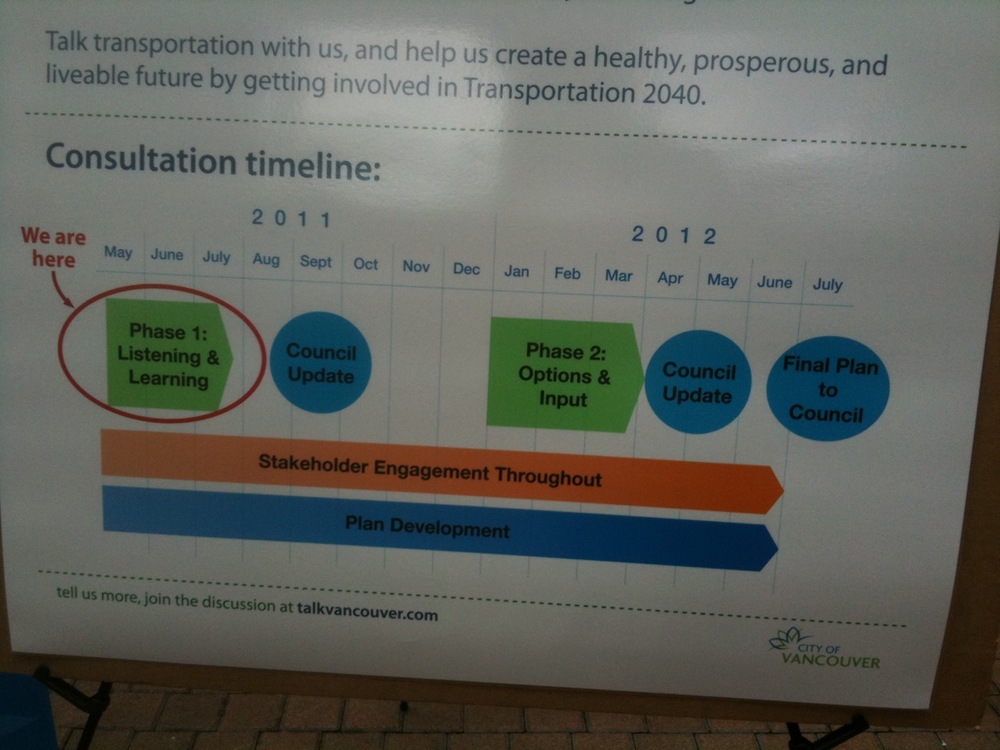Yesterday I was walking through VPL’s Central Branch (as an aside, Moshe Safdie’s design is one of the few North American libraries that feels truly like a public space instead of a creep-magnet). I spotted some freestanding posters with stickies on them and a table set up with a number of what looked to be city employees milling around. Intrigued by the handwritten stickies (I’m a sucker for anything handwritten), I took a closer look. It was a public information gathering booth for the Vancouver 2040 Transportation Plan and apparently this was Phase One’s “Listening & Learning” session.
First, I smiled a bit because the “consultation timeline” looked familiar — kind of like a software or web development requirements gathering session involving lots of stakeholders:
Then I saw a stack of surveys nearby. I asked one of the folks manning the booth if they wanted me to fill out the survey. I received a very lackluster, “Well, if you want to.” Any market researcher would’ve been appalled! Very hands-off indeed.
But it got me thinking — could urban planners put user research techniques to use? A survey is better than nothing (even if it is done half-heartedly), but surely there must be something more enlightening than people posting rants on sticky notes or vocalizing their rants/ideas in town hall meetings. Imagine if, after crunching all the data that they do have, and then calculating economic projections, they were able to come up with a handful of “user profiles,” that is, some archetypes of people who might comprise the city between now and 2040? I imagine there would one to represent seniors, another for newly landed immigrants, a mom to represent familiies, another for commuters… They could then take these profiles, find some residents who match these profiles and do some ethnographic research–not overboard, mind you, just a bit. This would allow them to learn first-hand about residents’ pain points, as well as the things that are already working so they don’t alter them to detrimental effect.
As anyone on the usability side of things knows, what people say is very different from what they do.
Wouldn’t that be an interesting and effective way to gather resident’s feedback? Wouldn’t it lend itself well to visualizing future scenarios, then coming up with the appropriate solutions?
Hey, it works for product and software design. Could it not work for urban design as well?


